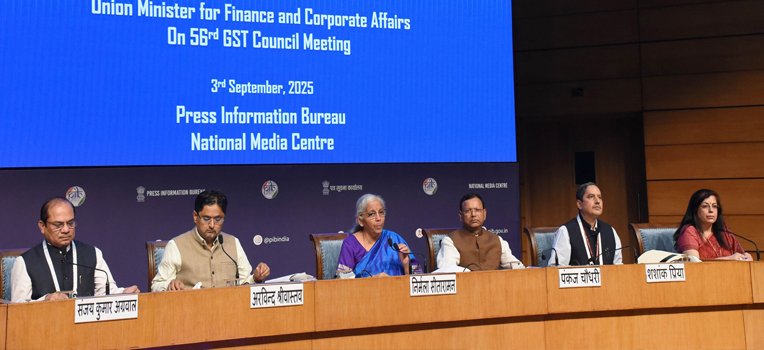ECONOMY
Inflation slumps, so does industrial production
- IBJ Bureau
- Jan 13, 2021

Headline CPI inflation surprised positively in December 2020, easing to a 15-month low at 4.59 per cent on a slump in food prices, while core inflation budged marginally. The fall in food inflation was due to a meaningful sequential easing in vegetables, cereals and protein complex, with current mandi prices hinting at its continuation in January too. The moderation in core inflation has been milder at 5.2 per cent as against 5.4 per cent earlier, with health, recreation and transport costs showing a sequential uptick. While demand conditions overall remain patchy (as also seen by the recent IIP print), the gradual recovery in economic activity, possibly an improvement in producers’ pricing power at the margin and rising input costs are weighing in on underlying inflation.
The CPI inflation print should comfort the MPC, which will likely cut Q4FY21 inflation forecast meaningfully by 70-80 bps amid current food price momentum. This should also help reinforce an accommodative stance in CY21 as headline inflation may average sub-4.5 per cent in FY22E as against 6.3 per cent in FY21E, assuming a normalisation in food inflation.
However, the MPC’s stance on policy rates and liquidity may not change or diverge soon. Liquidity normalisation is going to be slow and calibrated, ensuring that it does not become counter-productive amid sluggish growth and lead to premature tighter financial conditions.
CPI inflation reverts within MPC’s flexible target range, driven by a slump in food prices.
CPI inflation surprised again to the downside, printing 4.59 per cent (Emkay: 5.0 per cent and consensus: 5.0 per cent) after posting 6.93 per cent in November. The sharp correction was largely due to an easing in food inflation, while core inflation budged marginally. Food inflation slumped to 3.4 per cent on an annualised basis as against 9.5 per cent earlier, driven by a sequential easing in vegetables, cereals, and protein complex. On an annualised basis, vegetable inflation contracted 10 per cent with a fall seen across the board. High-frequency mandi prices suggest perishable food prices are falling further, auguring well for near-term inflation in the coming months, and could lead to CPI inflation falling to even sub-4.3 per cent in January. Energy inflation rose to 3 per cent amid a sequential rise on higher oil prices.
Core inflation nudges down marginally
Moderation in core inflation (ex-food, fuel and intoxicants) has been milder at 5.2 per cent as against 5.4 per cent earlier, with health, recreation and transport costs printing higher sequentially. Personal care and effects contracted month on month (m-o-m) to print close to 11 per cent year on year (y-o-y), reflecting the fall in gold and silver prices. Overall, gradual albeit patchy recovery in economic activity, possible improvement in producers’ pricing power at the margin, rising input costs, higher administrative and fuel costs, etc, could weigh in on core inflation. But the easing in supply-logistics disruption and output gap should weigh in negatively on underlying inflation dynamics.
November IIP contracts 1.9 per cent (+4.2 per cent in October), partly due to festive-led loss of working days
While lesser working days weighed in on IIP print, details showed that except for infrastructure and construction goods (0.74 per cent), all other segments saw declines. Capital goods saw a sharp contraction (-7.1 per cent y-o-y), as well as lower intermediate goods and primary goods production. Consumer goods nudged lower with a decline in both durable and non-durable goods. Meanwhile, industry-wise, a fall in production activity was seen in both manufacturing (-1.7 per cent) and mining (-7.3 per cent), while electricity grew by a modest 3.5 per cent. Within manufacturing, furniture, paper products and print media were the major negative contributors. In addition, as per two-digit classification, industries registering positive growth reduced to 10 out of 23 (16 earlier).
MPC to draw comfort, but further conventional easing looks elusive
The December CPI inflation surprise should comfort the MPC, which is set to meet next in early February. The current food price momentum should put sharp downward pressure on MPC’s Q4 inflation forecast (5.8 per cent) and help reinforce an accommodative stance in CY21. If food inflation normalises next year to sub-3 per cent compared with 8+ per cent in FY21E, headline inflation could average comfortably below 4.5 per cent in FY22E as against 6.3 per cent in FY21E. However, the core policy stance of the MPC may remain unchanged both on the rates and liquidity fronts in the coming months. Liquidity normalisation ahead will also likely be a slow and calibrated process, which should ensure that it does not become counter-productive and lead to premature, tighter financial conditions, and that G-Sec borrowings are well managed.
(Based on research report on CPI/IIP by Emkay Global Financial Services)





















Report By
View Reporter News